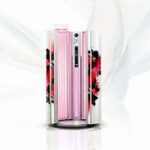Red light therapy and tanning are two different things that often get confused. While tanning involves exposure to UV rays to darken the skin, red light therapy uses non-UV wavelengths of light to promote healing and improve skin conditions. In this article, we’ll explore the differences between red light therapy and tanning and whether or not red light therapy can actually provide a tanning effect.
Contents
The Science Behind Red Light Therapy
Red light therapy is a non-invasive, painless treatment that uses specific wavelengths of red light to penetrate the skin at varying depths. It is believed that these wavelengths stimulate the production of collagen and elastin, which can help to reduce the appearance of fine lines and wrinkles, as well as improve skin tone and texture. Red light therapy is also commonly used to treat acne, as the wavelengths can help to kill bacteria that contribute to breakouts.
How Does Red Light Therapy Work?
Red light therapy works by stimulating the mitochondria in the cells of the body. Mitochondria are responsible for producing ATP, which is the energy source that cells need to carry out their functions. When red light is absorbed by the mitochondria, it can help to increase ATP production, which can lead to improved cellular function and repair.
Does Red Light Therapy Cause Tanning?
Red light therapy does not cause tanning. In fact, red light therapy is often used in conjunction with other treatments, such as photodynamic therapy, to reduce the risk of tanning or other skin damage. While red light therapy can stimulate the production of melanin in the skin, which is responsible for skin pigmentation, it does not increase the risk of tanning or sunburn.
The Benefits of Red Light Therapy
Red light therapy has a number of potential benefits for the body, including:
Improved Skin Health
Red light therapy can help to improve the appearance of fine lines and wrinkles, as well as reduce the appearance of acne and other skin blemishes.
Pain Relief
Red light therapy can help to reduce pain and inflammation in the body, making it an effective treatment for conditions such as arthritis and fibromyalgia.
Improved Immune Function
Red light therapy has been shown to stimulate the production of white blood cells, which can help to improve immune function and reduce the risk of infection.
Improved Mood
Red light therapy has been shown to have a positive effect on mood, reducing symptoms of depression and anxiety.
Misconceptions About Red Light Therapy
Red Light Therapy is Harmful to the Eyes
While it is true that exposure to certain wavelengths of blue light can be harmful to the eyes, red light therapy is not harmful. In fact, red light therapy has been used to treat a number of eye conditions, including macular degeneration and glaucoma.
Red Light Therapy is Only for Skin Care
While red light therapy is commonly used for skin care, it has a number of other potential uses as well, including pain relief, immune system stimulation, and mood enhancement.
Red Light Therapy is Expensive
While some red light therapy devices can be expensive, there are also many affordable options available on the market. Additionally, some spas and wellness centers offer red light therapy treatments at a reasonable cost.
Red Light Therapy is a Fad
Red light therapy has been used for decades as a safe and effective treatment for a variety of conditions. While it has gained popularity in recent years, it is not a passing trend or fad.
Accelerated Healing
Red light therapy can help to accelerate the healing process for a variety of injuries and conditions, including wounds, burns, and fractures. It may also help to reduce the risk of infection and scarring.
FAQs: Is Red Light Therapy Tanning?
What is red light therapy?
Red light therapy is a non-invasive therapeutic technique that uses red light to stimulate the body’s natural healing processes. It involves exposing the skin to a specific wavelength of red light, typically around 630 to 660 nanometers. Red light therapy is used for a wide range of conditions, including skin rejuvenation, pain relief, and wound healing.
Red light therapy works by stimulating the production of ATP (adenosine triphosphate) in cells, which is the energy source that fuels cellular processes. This increase in energy production helps to accelerate the healing process and promote overall cellular health. Red light therapy has also been shown to increase blood flow and reduce inflammation, both of which help to improve overall skin health.
Is red light therapy the same as tanning?
No, red light therapy is not the same as tanning. Tanning involves exposing the skin to UV rays, which can damage the skin and increase the risk of skin cancer. Red light therapy, on the other hand, uses a specific wavelength of red light that does not contain UV rays and is therefore safe for regular use. Red light therapy is designed to stimulate cellular processes and improve skin health, rather than darken the skin.
Can red light therapy improve skin tone and texture?
Yes, red light therapy can improve skin tone and texture. Red light therapy helps to promote collagen and elastin production, which are two key proteins that help to keep skin firm and smooth. It can also help to reduce the appearance of fine lines and wrinkles, as well as hyperpigmentation and age spots. Regular use of red light therapy can help to improve overall skin health and enhance the appearance of the skin.
Can red light therapy be used in conjunction with tanning?
While red light therapy and tanning are not the same thing, they can be used in conjunction with each other. However, it is important to consult with a healthcare professional before combining any treatments. Additionally, it is important to note that tanning can be damaging to the skin and increase the risk of skin cancer, so it is best to limit exposure to UV rays as much as possible.







